I'm doing some exercise to understand Java and Swing API. Why do I have a nullPointerException in the Disegno constructor? I want to print the coordinates of the two rectangles, but they seem not to be initialitied.
import java.awt.*;
import javax.swing.JFrame;
import javax.swing.JPanel;
public class Disegno extends JFrame{
Disegno(){
this.setSize(500, 500);
this.setDefaultCloseOperation(this.EXIT_ON_CLOSE);
MyPanel aba = new MyPanel();
this.setContentPane(aba);
this.setVisible(true);
System.out.println(aba.rect.blue.x + "-" + aba.rect.blue.y);
System.out.println(aba.rect.yellow.x + "-" + aba.rect.yellow.y);
}
public static void main(String[] args){
new Disegno();
}
}
class MyPanel extends JPanel{
JPanel up, down;
RectArea rect;
MyPanel(){
this.setLayout(new BorderLayout());
up = new JPanel();
this.add(up, BorderLayout.NORTH);
up.setBackground(Color.red);
up.setVisible(true);
down = new JPanel();
down.setBackground(Color.green);
this.add(down, BorderLayout.SOUTH);
down.setVisible(true);
rect = new RectArea();
this.add(rect, BorderLayout.CENTER);
this.setVisible(true);
}
}
class RectArea extends JPanel{
Rectangle blue, yellow;
boolean check = false;
RectArea(){
super();
this.setVisible(true);
}
public void initRect(){
blue = new Rectangle(0, 0, 100, 100);
yellow = new Rectangle(this.getWidth(), this.getHeight(), 100, 100);
System.out.println("ok");
}
@Override
protected void paintComponent(Graphics g){
super.paintComponent(g);
if(check == false){
this.initRect();
check = true;
}
System.out.println(this.getWidth() + "-" + this.getHeight());
g.setColor(Color.blue);
g.fillRect(blue.x, blue.y, blue.width, blue.height);
g.setColor(Color.yellow);
g.fillRect(yellow.x - yellow.width, yellow.y - yellow.height, yellow.width, yellow.height);
}
}
